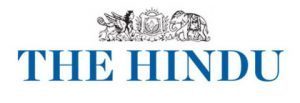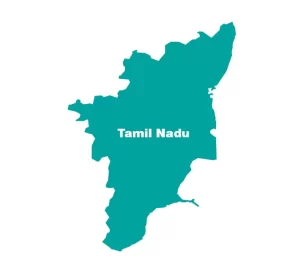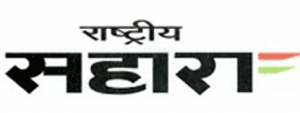16-02-2022) समाचारपत्रों-के-संपादक

Date:16-02-22
Power Of Giving
Fund-starved sectors like science, health, education, rural development need generous HNIs
TOI Editorial
The immense possibilities for philanthropy are highlighted by the Rs 425 crore donation from the families of IT firm Mindtree’s co-founders Subroto Bagchi and NS Parthasarathy to Indian Institute of Science. IISc, which last year broke into the top 100 band in Times Higher Education’s Reputation Ranking of global universities, will set up medical facilities focussed on cutting-edge clinical research and innovation. Philanthropy in India is growing but the fund flows are too miniscule despite the country boasting many high net-worth individuals (HNIs).
Domestic HNIs funding local causes could help offset the squeeze applied by FCRA restrictions to global non-profit contributions to India and the pandemic’s severe blow to those in lower income brackets. The number of Indian billionaires rose to an estimated 142 in 2021, with only the US and China ahead. But a Harvard Kennedy School study of nearly 1. 6 lakh foundations across 22 major countries revealed that 97% of foundation assets totalling $1. 5 trillion are concentrated in the US and Europe. Not only are Indian foundations’ ranking abysmally low, their spend rate (expenditure versus assets) was a low 3% against 9% in the US and 37% in Spain.
The India Philanthropy Report 2021 by Bain and Dasra notes philanthropic funding in 2020 rose 23% to Rs 64,000 crore. While foreign contributions, CSR and retail donations have stagnated at 80% of inflows, family philanthropy accounted for most of this increase. An Edelweiss study predicting 4 lakh Indian HNI families by 2025 with assets totalling Rs 360 lakh crore against 1. 5 lakh families with Rs 140 lakh crore assets in 2018, reveals high growth potential for family philanthropy. Mindtree founders are like other generous tech HNIs. The tech sector accounted for 26% of family philanthropy despite boasting only 9% of HNI families. With India’s public spending in areas like science and technology, health and education abysmally low in proportion to GDP compared to other countries, philanthropy can help bridge the gap. Will our HNIs step up?

Date:16-02-22
The importance of caste data
Data will help us determine who needs and does not need affirmative action and the effectiveness of such a measure
Pallvi Hooda is a Delhi-based advocate
Last month, the Supreme Court upheld the 27% quota for Other Backward Classes (OBC) in the All-India Quota seats for the National Eligibility-cum-Entrance Test and reiterated that reservations for backward classes were not an exception but an extension of the principle of equality under Article 15(1) of the Constitution. The judgment highlighted how open competitive exams give the illusion of providing equal opportunity in ignorance of the widespread inequalities in educational facilities, the freedom to pursue such education, and societal prejudices. The Court pointed out how such disparities are not limited to the issue of access to good education or financial constraints alone, but also to the psychological and social effects of inherited cultural capital (communication skills, books, accent, academic accomplishments, social networks, etc.), which ensures the unconscious training of upper-caste children for high-grade performance. The Constituent Assembly held a similar philosophy while introducing constitutional provisions which enable the government to make special provisions for the uplift of the “lower castes”.
However, despite the underlying good intentions, positive discrimination has been a controversial topic. Many oppose affirmative actions like reservation; they believe that such provisions only perpetuate caste differences and they call for a “casteless society”. As Justice D.Y. Chandrachud pointed out, “castelessness” is a privilege that only the upper caste can afford because their caste privilege has already translated into social, political and economic capital. On the other hand, individuals who belong to the lower castes must retain their caste identity in order to claim the benefits of measures such as reservation, which recognise historic harm.
Promises without justifiable data
But even for those who are conscious of these issues, it is hard to blindly trust the state’s motivations because of the caste and class politics ruling our country today. Political parties often promise reservation for communities on being brought to power without any credible data collection exercises to justify the decision. Not long ago, the Supreme Court struck down the reservation for the Maratha community in Maharashtra in excess of 50%, which was the limit set in the Indra Sawhney case, while observing that “when more people aspire for backwardness instead of forwardness, the country itself stagnates which situation is not in accord with constitutional objectives”.
Need for a credible exercise
Against this backdrop, it can be said that the faith of our citizens cannot be restored until credible exercises of data collection are undertaken regarding caste. Even though data concerning the Scheduled Castes and Scheduled Tribes have been included in the Census, there is no similar data on OBCs. The Socio-Economic and Caste Census (SECC) conducted in 2011 has been called “faulty” and “unreliable”. Even the Mandal Commission’s recommendations were criticised as being based merely on the “personal knowledge” of the members of the commission and sample surveys. In the Indra Sawhney case, the Supreme Court held that the States must conclude the “backwardness” of a particular class of people only after proper assessment and objective evaluation. It held that such a conclusion must be subject to periodic review by a permanent body of experts. The National Commission for Backward Classes Act, 1993, provides under Section 11 that the Central government may every 10 years revise lists with a view to exclude those classes which have ceased to be backward and include new backward classes. This exercise has not been done to date. Last year, many calls were made for the inclusion of caste data (including that of the OBCs) in the 2021 Census, and the matter reached the Supreme Court. However, the government took the stand that the 2011 SECC was “flawed” and is “not usable”. Since the Census could not be undertaken in 2021 due to the pandemic, it is set to take place in 2022.
Caste data will enable independent research not only into the question of who does and does not need affirmative action but also into the effectiveness of this measure. As long as reservation results from violent agitations and political pressures, attempts at any affirmative action will always be under the shadow of caste and class politics. Impartial data and subsequent research might save the bona fide attempts of the uplift of the most backward classes from the shadow of caste and class politics and be informative to people on both sides of the spectrum – for and against reservation. It is not reservation that creates the current divide in our society but the misuse or the perceived misuse of reservation.
Date:16-02-22
Local elections, national issues
The campaign to the urban body polls in Tamil Nadu has been unusual in many ways
D. Suresh Kumar
 An outsider watching electioneering by top politicians in Tamil Nadu might perhaps mistake the State to be the sixth one going to the polls this round. For, such is the pitch of the campaign in the southern State where elections to urban local bodies are being held after a decade. There are no star candidates, as Mayors of Corporations and Chairpersons of Municipalities will be elected indirectly by the victorious councillors. Following the collapse of the AIADMK alliance, the ruling DMK-led camp is pitted against an array of national, regional and fringe parties.
An outsider watching electioneering by top politicians in Tamil Nadu might perhaps mistake the State to be the sixth one going to the polls this round. For, such is the pitch of the campaign in the southern State where elections to urban local bodies are being held after a decade. There are no star candidates, as Mayors of Corporations and Chairpersons of Municipalities will be elected indirectly by the victorious councillors. Following the collapse of the AIADMK alliance, the ruling DMK-led camp is pitted against an array of national, regional and fringe parties.
Two issues stand out in these elections. First, unusually for civic elections, leaders of major parties have been conducting daily campaigns. DMK president and Chief Minister M.K. Stalin has been addressing party cadres of each district via video conferencing, which is simultaneously telecast at multiple locations. AIADMK coordinator O. Panneerselvam and co-coordinator Edappadi K. Palaniswami have been functioning like a double barrel gun, with each hitting the ground in a different region every day. This is in contrast to last year’s Assembly polls, when much of the campaign burden was shouldered by Mr. Palaniswami, while the coordinator was largely confined to his native Theni region. The BJP’s State president, K. Annamalai, who took the bold gamble to go it alone hoping to improve the party’s vote share, has been firing salvos at the DMK. Usually, top leaders issue statements and undertake campaigning in major cities in the last leg, while the candidates sweat it out in the wards. Second, the focus of the campaign is on larger issues rather than smaller ones. Mr. Stalin has been attacking Prime Minister Narendra Modi and the BJP-led government at the Centre, while also questioning former Chief Minister Palaniswami for the “lack of development” and “poor law and order situation” during the erstwhile AIADMK regime in the State. “Already, GST has taken away the States’ revenue. Now, the Union government is planning to usurp the funds raised by the States through [one nation] registration, which is one of the most important avenues for revenue generation. Are they attempting to take over and seize the States’ finances? How will the States run their governments,” he has asked during campaigns before addressing micro-level district issues that are more relevant to the polls.
A split in anti-establishment votes usually benefits the ruling party. But the DMK is taking no chances as it faced some criticism for last year’s flooding in Chennai and elsewhere; for not cushioning the impact of the floods through cash aids for affected people; and for allegedly providing poor quality ingredients in the Pongal festival hamper supplied to sections of rice ration card holders.
Mr. Palaniswami has also been going beyond normal election commentary. He is predicting an election to the Tamil Nadu Legislative Assembly in 2024, two years ahead of the scheduled term, under the ‘one nation, one poll’ idea mooted by Mr. Modi. Besides, he has been warning citizens about a West Bengal-type ‘proroguing’ of the Assembly by the Governor, notwithstanding the latter clarifying that the action was taken at the request of the elected government.
The two Dravidian parties have also been attacking each other on NEET, from which the State is seeking exemption, and unfulfilled poll promises.
DMK general secretary Duraimurugan, a veteran of electoral battles since 1971, sees nothing unusual about placing national issues before a local electorate. Instead, he says, doing so will create political awareness on larger issues and bring about a “change in the outlook” of the people. In 2011, the AIADMK under Jayalalithaa created a record sweeping the urban civic polls. Whether the DMK will replicate this success will be known next week.
Date:16-02-22
संभावित युद्ध की कीमत
संपादकीय
पूर्वी यूरोप में व्याप्त संकट की खबरों के तेज प्रसार के बीच दुनिया भर के बाजारों में अस्थिरता का माहौल है। पहले एशिया और उसके बाद यूरोप के शेयर बाजारों में तेज गिरावट देखने को मिली। इसके पश्चात जैसे ही रूस के एक जनरल ने कहा कि यूक्रेन की सीमा से कुछ सैनिक हटाये जाएंगे, बाजारों ने तेजी से वापसी भी की। रूस और उसके दक्षिण पड़ोसी (जो कभी सोवियत संघ का सदस्य था और अभी भी आर्थिक सांस्कृतिक रूप से रूस से जुड़ा हुआ है) के बीच तनाव बढ़ने से, मुद्रास्फीति के कारण पहले से परेशान शेयर बाजारों की हालत और खस्ता हो गई। रूस और यूक्रेन के बीच तनाव के कारण भारत में अस्थिरता सूचकांक 20 फीसदी बढ़ा और सप्ताह के आरंभ में शेयरों में तीन फीसदी की गिरावट आई।
जीवाश्म ईंधन इस संकट की वजहों में से भी एक है और संकट का असर भी इस पर पड़ेगा। रूस प्राकृतिक गैस का बड़ा निर्यातक है, खासतौर पर वह पश्चिमी यूरोप को गैस निर्यात करता है। रूस ने कभी इस बात को नहीं छिपाया कि वह गैस आपूर्ति पर अपने नियंत्रण का इस्तेमाल यूरोपीय देशों को सहयोग के लिए विवश करने के वास्ते करता है। यूरोपीय संघ, यूक्रेन की संप्रभुता की रक्षा करने के लिए प्रभावी और एकजुट मोर्चा बनाने में नाकाम रहा। जर्मनी के नए चांसलर ओलाफ शॉल्ज ने यूक्रेन की राजधानी कीव का दौरा किया जहां उन्होंने समर्थन पर बल दिया लेकिन हथियारों की बिक्री का वादा नहीं किया। फ्रांसीसी राष्ट्रपति एमैनुएल मैक्रों ने रूस की नाटकीय यात्रा की लेकिन रूस के राष्ट्रपति व्लादीमिर पुतिन के साथ पांच घंटे लंबी वार्ता के बाद भी यह नहीं पता चला कि कोई प्रगति हुई अथवा नहीं। इस बीच अमेरिका ने भी पूरी तरह रचनात्मक भूमिका नहीं निभाई। उसने बार-बार दोहराया कि युद्ध होना तय है तथा उसने कीव में अपना दूतावास खाली करा दिया। इस बात ने यूक्रेन को नाराज किया। ध्यान देने वाली बात यह है कि कीव में शॉल्ज ने अमेरिकी राष्ट्रपति जो बाइडन के उस वादे का समर्थन नहीं किया कि अगर रूस यूक्रेन पर हमला करता है तो रूसी गैस को यूरोप ले जाने वाली नॉर्ड स्ट्रीम 2 पाइपलाइन कभी अस्तित्व में नहीं आएगी। मूल नॉर्ड स्ट्रीम परियोजना का नेतृत्व शॉल्ज के पहले जर्मन चांसलर बनने वाले अंतिम सोशल डेमोक्रेट गेरहार्ड शॉर्डर के पास है और उन्हें रूस की सरकारी ऊर्जा कंपनी गेजप्रॉम के बोर्ड में भी शामिल किया गया है।
परंतु वैश्विक बाजार यह मानते हैं कि यूक्रेन में रूस के किसी भी तरह आक्रमण की प्रतिक्रिया शेष विश्व तक उसकी वित्तीय और कारोबारी पहुंच को प्रभावित करेगी। उदाहरण के लिए वह स्विफ्ट नेटवर्क के जरिये होने वाले अंतर बैंक हस्तांतरण से अलग-थलग हो सकता है। परंतु वास्तविक चुनौती यह है कि रूस, जो दुनिया के जीवाश्म ईंधन आधारित उत्पादों मसलन नेफ्था और तेल आदि में बीस फीसदी हिस्सेदारी रखता है, वह भी वैश्विक ईंधन आपूर्ति श्रृंखला से कट सकता है। यदि ऐसा हुआ तो मुद्रास्फीति का दबाव और बढ़ेगा। कच्चे तेल की कीमत 100 डॉलर प्रति बैरल की ओर बढ़ रही है जो 2014 के बाद का उच्चतम स्तर है, हालांकि रूसी सैनिकों के आंशिक रूप से हटने की खबर के बाद यह घटकर 95 डॉलर प्रति बैरल तक आई। मांग पहले ही आपूर्ति से अधिक है और विश्व स्तर पर तेल के भंडार कम हो रहे हैं। यदि तेल कीमतें इसी स्तर पर रहीं तो वैश्विक मुद्रास्फीति आधा फीसदी तक बढ़ सकती है। भारत जैसे आयात पर निर्भर देशों में महंगाई और बढ़ेगी। यह स्पष्ट होना चाहिए कि रूस यदि आक्रमण करता है तो विश्व अर्थव्यवस्था को इसकी बड़ी कीमत चुकानी होगी। संकट को टालने के कूटनीतिक प्रयास सफल होने चाहिए और रूसी नेतृत्व द्वारा शांति का मार्ग छोड़ने की भी उसे भारी कीमत चुकानी ही चाहिए।

Date:16-02-22
चीनी एप्स पर स्ट्राइक
संपादकीय
 भारत ने सोमवार को चीन से संबंध रखने वाले 54 और मोबाइल एप्स को सुरक्षा और निजता से जुड़े मसलों पर प्रतिबंधित कर दिया। इसके साथ ही गूगल और एप्पल ने इन एप्स को प्ले स्टोर से अस्थायी रूप से हटा लिया है। जानकारी मिली थीं कि उपयोगकर्ताओं से अहम सूचनाएं और संवेदनशील जानकारियां जुटाकर ये एप्स कथित रूप से उन्हें विरोधी देश में स्थित सर्वरों को भेज रहे थे। सूचना प्रौद्योगिकी मंत्रालय ने इन 54 एप्स को प्रतिबंधित करने संबंधी अंतरिम निर्देश जारी किया। गृह मंत्रालय ने इन एप्स से देश की सुरक्षा को गंभीर खतरे के अंदेशे से इस बाबत सिफारिश की थी।
भारत ने सोमवार को चीन से संबंध रखने वाले 54 और मोबाइल एप्स को सुरक्षा और निजता से जुड़े मसलों पर प्रतिबंधित कर दिया। इसके साथ ही गूगल और एप्पल ने इन एप्स को प्ले स्टोर से अस्थायी रूप से हटा लिया है। जानकारी मिली थीं कि उपयोगकर्ताओं से अहम सूचनाएं और संवेदनशील जानकारियां जुटाकर ये एप्स कथित रूप से उन्हें विरोधी देश में स्थित सर्वरों को भेज रहे थे। सूचना प्रौद्योगिकी मंत्रालय ने इन 54 एप्स को प्रतिबंधित करने संबंधी अंतरिम निर्देश जारी किया। गृह मंत्रालय ने इन एप्स से देश की सुरक्षा को गंभीर खतरे के अंदेशे से इस बाबत सिफारिश की थी।
गौरतलब है कि चीन के 267 एप्स पहले ही प्रतिबंधित किए जा चुके हैं, जिन्हें पूर्वी लद्दाख में टकराव के बाद 2020 में प्रतिबंधित किया गया था। अब ब्यूटी कैमरा, टेनसेंट जराइवर, क्यूटय़ू प्रो. मून चैट, विंक कनेक्ट नाउ, फन चैट, वीवा वीडियो एडिटर, एमपी3कटर, बारकोड स्कैनर, म्युजिक प्लस, वॉल्यूम बूस्टर, एस्ट्राक्राफ्ट आदि पर प्रतिबंध की गाज गिरी है। कहना होगा कि चीन के एप्स देश की सुरक्षा एवं अखंडता के लिए बराबर खतरनाक साबित हो रहे हैं। संभव है कि पूर्व में जिन एप्स पर भारत सरकार ने प्रतिबंध लगाया था, वे ही बदले नाम से फिर से आ गए हों। चीन के रवैये और रुख से अड़ियलपन झलकता है, और वह जब-तब सीमा पर टकराव की नौबत पैदा कर देता है। पड़ोसी देश पाकिस्तान को शह देकर भारत के खिलाफ उकसाने का कोई मौका नहीं चूकता।
इसलिए चौकस रहना होगा क्योंकि चीन छल-प्रपंच का पर्याय बन चुका है। अमूमन भारत किसी देश के खिलाफ इतना सख्त रवैया अख्तियार नहीं करता, लेकिन चीन हरकतों से बाज नहीं आ रहा। अपने कुत्सित मंसूबों को पूरा करने में वह इतना आगे निकल जाता है कि इस तथ्य को भी अनदेखा कर बैठता है कि भारत उसके उत्पादों का बड़ा बाजार है। उसकी अनेक बहुराष्ट्रीय कंपनियां भारत में कारोबार कर रही हैं। कटु तथ्य है कि भारत और चीन की व्यापारिक भागीदारी में भारत की चीन पर निर्भरता बहुत ज्यादा है। व्यापार घाटे वाली स्थिति है, इसलिए विशेषज्ञों का मानना है कि भारत को व्यापारिक रूप से चीन पर अपनी निर्भरता को यथाशीघ्र कम करना चाहिए। अस्थायी प्रतिबंध आदि से काम नहीं चलने वाला। चीन के खिलाफ ठोस कार्रवाई व्यापार कम करके आर्थिक चोट करने से ही होगी।
Date:16-02-22
लापरवाही का खेल या मिलीभगत ?
रविशंकर
बैंक किसी भी देश की अर्थव्यवस्था का अहम हिस्सा होता है। बैंक एक ऐसी जगह है जहां आम लोग अपनी छोटी-बड़ी बचत करते हैं और भविष्य के हिसाब से योजनाएं बनाते हैं, लेकिन देश में आए दिन बैंक घोटालों के मामले सामने आते रहते हैं, ऐसे में सोचिए कि आपने अपनी कमाई से पैसा बचा कर बैंक में जमा किया हो और अचानक पता चले की आपका पैसा डूब गया।
खैर, ऐसी स्थिति बैंकिंग व्यवस्था के चरमराने की वजह से होती है। देश में बैंक धोखाधड़ी का एक और सबसे बड़ा मामला सामने आया है। यह घोटाला करीब 23 हजार करोड़ रु पये का है। इस घोटाल के लिए गुजरात के एबीजी शिपयार्ड कंपनी और उसकी सहयोगी कंपनी को जिम्मेदार ठहराया गया है। शिपयार्ड कंपनी ने देश के अलग-अलग 28 बैंकों से कारोबार के नाम पर 2012 से 2017 के बीच कुल 28,842 करोड़ रुपये का ऋण लिया था। जाहिर है, यह सब कोई अचानक या दो-चार दिनों में नहीं हुआ होगा। अहम बात यह है कि 2016 में ही बैंकों का भारी-भरकम ऋण एनपीए भी घोषित हो गया था, लेकिन देश की इस सबसे बड़ी बैंक धोखाधड़ी के खिलाफ पहली शिकायत 2019 में दर्ज कराई गई।
मालूम हो, एबीजी शिपयार्ड कंपनी सूरत में स्थित है। यह पानी के जहाजों के निर्माण समेत उनके मरम्मत का भी काम करती है। कंपनी पर आरोप है उसने व्यापार के लिए बैंकों के समूह से लोन और कई प्रकार की सुविधाएं ली और फिर इन पैसों को अपनी सहयोगी कंपनियों की मदद से दूसरे देशों में भेज दिया। जहां पर शेयर आदि खरीदे गए। इतना ही नहीं बैंकों से जिस काम के लिए लोने ली गई थी,उस पैसे का इस्तेमाल कई प्रॉपर्टीज खरीदने में भी की गई। साथ ही तमाम नियम कानून को ताक पर रखकर पैसा एक कंपनी से दूसरी कंपनी को भेजा गया। बहरहाल, बैंक धोखाधड़ी का यह पहला मामला नहीं है। इसके पहले भी कई बैंकिंग घोटाले सामने आते रहे हैं। इससे पहले नीरव मोदी ने पंजाब नेशनल बैंक को लगभग 13 हज़ार करोड़ रु पये व विजय माल्या ने नौ हजार करोड़ रुपये का चूना लगाया था। तब उसे भारत के बैंकिंग इतिहास की सबसे बड़ी धोखाधड़ी कहा गया था। हालांकि, बड़े लोन एडवांस में धोखाधड़ी करना आसान नहीं होता और फिर भी ये होते हैं क्योंकि बैंक के अधिकारी लेनदारों या कभी-कभी तीसरे पक्ष जैसे कि वकीलों या चार्टर्ड एकाउंटेंट तक के साथ सांठगांठ कर लेते हैं। गौर करने वाली बात यह है कि कुल धोखाधड़ी का 90 फीसद हिस्सा सरकार के स्वामित्व वाले बैंकों में होता है। 2013-14 के बाद से केवल पांच वर्षो में इस तरह के धोखाधड़ी के मामलों में चार से पांच गुना वृद्धि हुई है। सवाल अहम यह है कि आखिर बैंकों में धोखाधड़ी की घटनाएं इतनी क्यों बढ़ रही हैं? शोध से पता चला है कि चाहे छोटी धोखाधड़ी हो या बड़ी, दोनों ही सिस्टम की कमजोरियों का अनुचित लाभ उठाने में सक्षम रही हैं। रिजर्व बैंक के पास इस तरह की धोखाधड़ी से बचने को लेकर प्रारंभिक चेतावनी संकेत (ईडब्ल्यूएस) प्रणाली मौजूद है लेकिन जैसा कि नीरव मोदी के मामले में हुआ, बैंक हमेशा इसका फायदा नहीं उठा पाते। आरबीआईपूर्व गवर्नर उर्जित पटेल ने 2019 में स्टैनफोर्ड यूनिर्वसटिी में एक प्रेजेंटेशन के जरिए यह दिखाया था कि ज्यादातर धोखाधड़ी के मामले सरकार के स्वामित्व वाले बैंकों में जोखिम से निपटने की खराब कार्य प्रणाली प्रबंधन और अप्रभावी इंटरनल ऑडिट की वजह से होते हैं। उन्होंने बताया कि बैंक जोखिमों का बेहद कम विश्लेषण करते हैं या इसे लेकर उचित कदम नहीं उठाते हैं। यह ठीक है कि बैंकों में धोखाधड़ी की बढ़ती घटनाओं को रोकने के लिए सरकार ने व्यापक उपाय किए हैं, फिर भी धोखेबाजों को रोक पाने के लिए अपर्याप्त हैं। आरबीआई के आंकड़ों की मानें तो साल दर साल धोखाधड़ी के मामले तो बढ़ ही रहे हैं, साथ ही इस कारण होने वाला नुकसान भी बढ़ रहा है। इससे देश के बैंकों के सिर पर आर्थिक स्थायित्व कम होने का खतरा भी बढ़ रहा है। वहीं आम लोगों का भरोसाभी सरकारी बैंकों से टूट रहा है। इसके अलावा बैंकों, बैंकों के ऑडिटर्स, क्रेडिट रेटिंग संस्थाएं और बैंकों की नियामक संस्था आरबीआई के ऊपर भी ये एक बड़ा सवाल है। आखिर वे क्या वजहें रहीं कि छोटी-मोटी रकम के ऋण की वसूली में अत्यंत सजग रहने वाले बैंकों को इतनी बड़ी रकम को लेकर समय पर कोई संदेह नहीं हुआ?
किन परिस्थितियों में इतनी बड़ी रकम का घोटाला करने वाले कई सालों तक धोखाधड़ी का खेल करते रहे और समय रहते बचने के लिए विदेश भी भाग गए और संबंधित महकमों और जांच एजंसियों को पता नहीं चला? ऐसे में सवाल उठना लाजिमी है। साफ है, आम आदमी 3 महीने से ज्यादा यदि लोन का डिफाल्ट करता है तो बैंक उसे कुर्की की धमकी तक दे डालता है और यहां पर कंपनी द्वारा 22,842 करोड़ रु पये का डिफाल्ट किया गया और बैंकों द्वारा न केवल इस खाते को नियमित करने की कोशिश की गई बल्कि कार्रवाई करने में 9 साल देकर कंपनी और निदेशकों की पूरी मदद की गई कि वे पैसे पूरी तरह डुबो सकें। सफेदी की तरह साफ दिखने वाले डिफाल्ट पर इतना समय लगना बैंकों के प्रबंधन की तो अक्षमता दर्शाता है, साथ ही नियामक आरबीआई और वित्त मंत्रालय पर भी शक की सुई उठती है कि आखिर सालों से ये क्यों चुप रहे?

